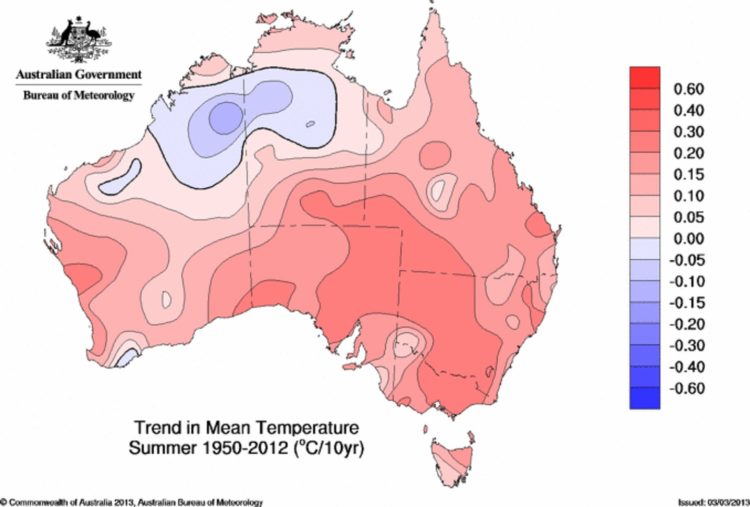By Hannah Kent-
Australia may be inhabitable in decades to come because of extra heat in the country. Several cities in Australia, including Sydney and Hobart have been hit by exceedingly hot temperatures beyond the usual of late.
Hobart’s has experienced six consecutive hot November days above 26C in the past week, , unrivalled for 130 years.
Scientists have warned that the conditions of extra hot temperatures in another of Australia’s capitals could get so unbearable that it may become “not viable” to live there in decades to come. They say that a combination of debilitating humidity and what’s known as the “urban heat island effect” mixed in with a good dose of climate change could leave Darwin off-limits to all but the hardiest. This is discouraging news for a country praised and envied for its usually consistent warm weather that allows young men and women to be in their element throughout most of the year, flaunting their beauty and highly fashionable tastes. However, the warning signs are becoming frightening; urgent action is required to curb the excesses of heat which could become an epidemic in years to come.
BRUTAL
Earlier in the year, the Bureau of Meteorology warned 2017’s build-up would be “brutal”.
Australian National University’s Dr Elizabeth Hanna, an expert on the effects of climate change on health, told news.com.au it was the Top End’s tropical humidity that was the big problem.
“We can cope with much higher temperatures in Melbourne because the air is drier, but in Darwin the high temperatures and humidity are oppressive.“If it gets worse, those unpleasant times of the year (like the build-up) will extend longer and longer making it not a viable place to live,” she said.
Mattheos Santamouris, a professor of high performance architecture at the University of NSW, is working on a project, funded by the NT Government, to study how Darwin’s heat can be given the heave-ho. He added:
“The focus is often on the global impact of climate change, but we also need to understand what is happening at a local level, in our own cities,” Prof Santamouris said.“If we can’t find a way to make our cities cooler, they will eventually become uninhabitable.”
In August, similar warnings from scientists were made that by the turn of the century India could be hit by climate change fuelled heatwaves so extreme they could killeven healthy people within hours. Scientists believe that if Carbon emissions are not kept in appropriate check, about 4 per cent of India’s population would experience a non-survivable heatwave at some point after 2071.
Australia is one of the world’s most popular destinations for people who want to emigrate and have a more relaxed life. Warm temperatures have long been a strong point of appeal, but if hot weather will make it a future disaster so bad that it becomes uninhabitable, we may eventually find a lot of people turned off from it and moving of out the country.

